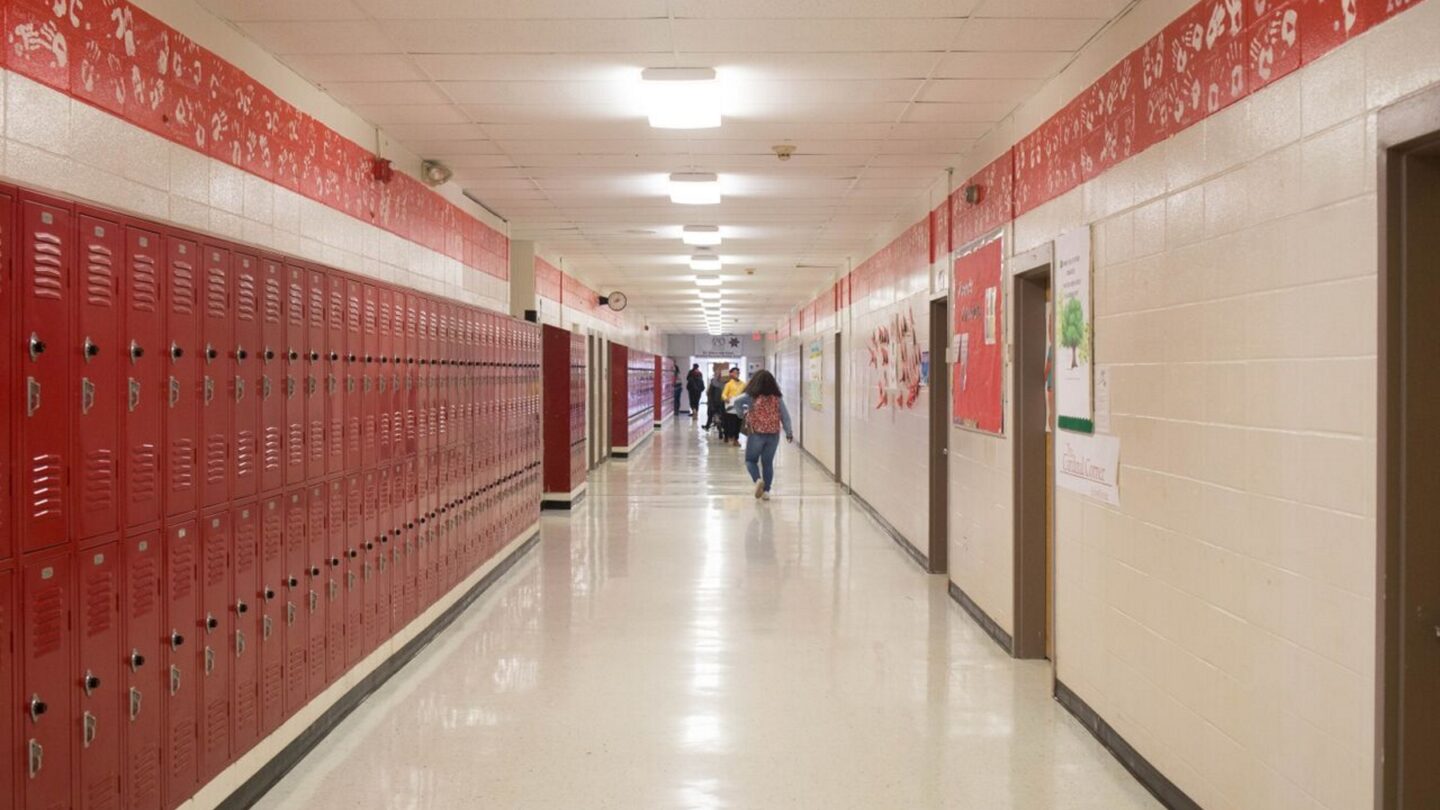No A-to-F grades for Georgia public schools for third year

A hallway in Osborne High School in Cobb County. (Ian Palmer/WABE)
Georgia will go a third year without assigning A-to-F grades to public schools and districts because of the COVID-19 pandemic, after the federal government waived part of the requirements for the state’s normal evaluation system.
Instead, the state will publish multiple measures that are normally parts of the overall grade, saying it can’t reliably compute some figures because there was no testing in 2020 and widely varying shares of students from school to school took tests in 2021.
The U.S. Department of Education approved the change late last month and state officials announced it to superintendents in an email on June 2.
Normally, schools and districts are graded on a single 100-point scale in what Georgia calls the College and Career Ready Performance Index, with a letter grade assigned based on the score.
Georgia didn’t administer its Milestones standardized tests to student in grades 3-8 and high school in spring of 2020 and produced no grades after that year. The state didn’t assign grades based on the 2021 tests either, meaning schools last received new grades in 2019.
State Superintendent Richard Woods, a Republican seeking reelection this year against Democrat Alisha Thomas Searcy, has been an opponent of the current index, saying it relies too heavily on test scores. But Woods hasn’t proposed any changes, and Deputy State Superintendent Allison Timberlake, who oversees assessment and accountability, said the state currently plans to assign grades in 2023.
The Georgia Department of Education will publish multiple 100-point subscores for the just concluded 2021-2022 school year using some of the areas normally combined to make up the overall index. For example, the state will publish a 100-point scale based on achievement on tests of English/language arts, math, science and social studies.
But Georgia won’t calculate a score based on whether schools are closing achievement gaps. Nor will it calculate a score based on whether test scores have improved because it will only have data for growth toward English proficiency for students learning the language, leaving out English and math tests. Finally, the state won’t factor attendance into its readiness measure, because of COVID-19 related absences.
The federal government required Georgia to administer standardized tests in spring 2021 over the protests of Woods. Students were not required to come to school to take the tests. Scores fell significantly for those who did take them. But some districts didn’t test enough students to capture overall achievement, Timberlake said.
“Testing was kind of all over the board last year, which makes the ’21 data a little difficult to use in making comparisons to this year, which is why we’re not calculating the growth and we’re not doing closing (achievement) gaps,” she said.
The state intends to use 2022 tests as a new baseline to compare growth and achievement gaps among different groups of students.
Despite the lack of an overall grade, the federal government is requiring Georgia to identify new groups low-achieving schools for extra state help.
Normally, Georgia chooses the lowest 5% of schools for what it calls “comprehensive support and improvement.” Instead, Georgia will look at schools with low content mastery scores. The new group will be determined by further examining those with low progress toward proficiency for English language learners and low readiness scores. For high schools, low graduation rates will also be considered.
Schools still on the 2019 list for extra help could be removed.
Some testing rules are back to normal. After being nearly zeroed out last year, standardized tests given to Georgia high school students in algebra I, U.S. history, biology and American literature and composition again counted for 20% of a student’s grade in 2021-2022.








